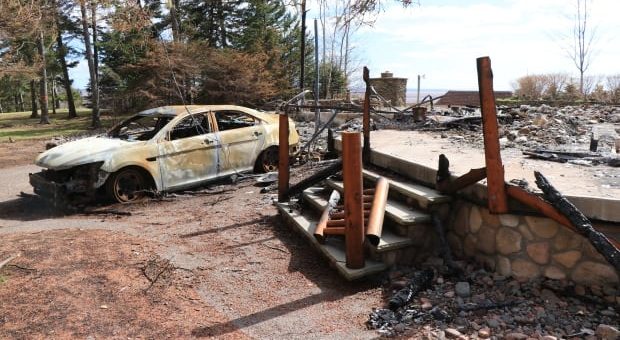
RCMP hoped navigation logs from vehicles owned by the gunman responsible for last month’s mass shooting in rural Nova Scotia could show whether he previously travelled the route he took during his violent rampage, newly unsealed court documents reveal.
Police sought judicial authorizations in the days following the deaths of 22 people to search properties belonging to the shooter, Gabriel Wortman, as well as electronics and vehicles.
This allowed them to look for evidence related to the murder and attempted murder investigations — everything from human remains to firearms, ammunition, explosives and chemicals, to computers and clothing connected to police uniforms.
Court records released Monday show RCMP collected an ammunition box containing a burnt $100 bill, a charred receipt book, a black plastic bag and a burnt barrel and action, which are pieces of a rifle, from 200 Portapique Beach Rd. in the community of Portapique, N.S., where the killing began on the night of April 18.
They also seized ammunition from 136 Orchard Beach Dr., also in Portapique, though the exact type and the amount is redacted.
A search of the shooter’s Portland Street property in Dartmouth, where he operated his denturist office and had an apartment, resulted in the seizure of a laptop, SD card, GPS, tablet and router.
Police hoped the in-vehicle “Infotainment systems” of Wortman’s 2013 Ford Taurus and 2015 Mercedes, both seized at the Dartmouth business, could shed light on his movement prior to the attacks.
WATCH | What we know about the mass shooting in Nova Scotia:
The systems are used when people connect with Bluetooth or use voice commands on cellphones. Cpl. Duane Flynn, whose comments are included in the submissions the RCMP made when requesting a search warrant, said if someone syncs their electronic device with a car, their data can be transferred and stored in the system even after a device has left the vehicle.
He said the RCMP tech crime unit has software that can even allow investigators to review deleted data. The documents show police were able to obtain stored data from both vehicles, as well as the other electronics.

After attacking his common-law partner and killing 13 neighbours in Portapique, Wortman drove at least 150 kilometres, killing people in Wentworth, Debert and Shubenacadie over the course of 13 hours before being shot dead by police.
Sgt. Angela Hawryluk, a 28-year veteran of the RCMP, wrote in her application for a search warrant that “the navigation track logs could provide information whether Gabriel travelled this route prior to April 18, 2020.”
She filed the requests on behalf of the RCMP between April 20 and 24. Initially, the justices of the peace who approved them agreed to seal the records.
Other specific details about what the RCMP believed was contained in the data from the cars and electronics, or what it might show, was redacted.
CBC went to court to gain access to documents
In April, CBC made an application to the court arguing it’s in the public interest that the documents be unsealed.
On May 19, the court unsealed one of the informations to obtain a search warrant (ITO), which outlined witness statements RCMP gathered in the case.
They revealed people who knew the gunman described him as abusive and paranoid and said he collected firearms that he stored on his properties. Witnesses also reported knowing he recently stockpiled $800 worth of gasoline.
On Monday morning, Nova Scotia provincial court Judge Laurel Halfpenny MacQuarrie agreed to release the list of items seized during the searches of Wortman’s properties in Portapique, the search warrant itself, which wasn’t previously public, and six additional warrants, production orders and the associated ITOs, which spell out evidence investigators gathered.
The documents released Monday contain the same summaries of witness statements and the RCMP’s case. Several of the search warrant applications include screenshots of emails Wortman sent the week before the shooting. The type of device he used is redacted.
One referenced him living at his Portapique cottage and “enjoying this prelude to retirement.” It said most mornings from 5 a.m. till noon he was “studying the news on U-tube.”

Though one of the witness statements reference Wortman not having a cellphone of his own, police sought a production order to request data on a Telus mobility device and asked for access to data from April 1 to April 23 on a Samsung cellphone.
The documents also show police searched a denturist office on Novalea Drive in Halifax but didn’t seize anything.
Several other media outlets, including CTV, Global News, the Globe and Mail, Postmedia, The Canadian Press, the SaltWire Network and the Halifax Examiner joined CBC’s application and are also represented by Halifax lawyer David Coles.
Coles has told the court the applicants would like access to all 20 judicial authorizations filed in the case.
The next hearing is scheduled for June 12, at which point the Crown is expected to present tables outlining the reasons for the redacted sections in the documents that have been released so far.













